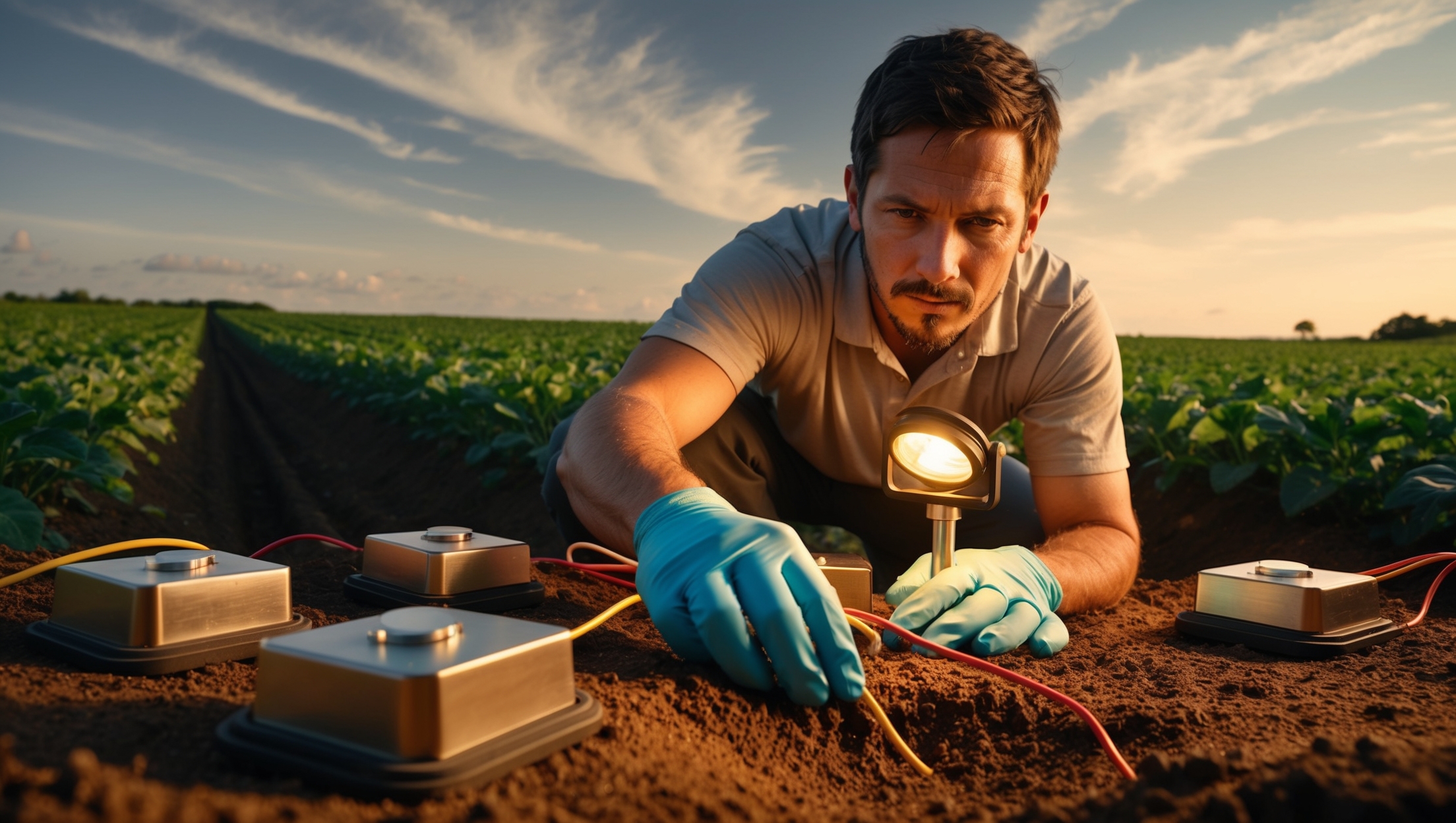When it comes to soil moisture management, having reliable data is essential. But even the most advanced sensor won’t provide accurate readings if it’s not calibrated properly. Calibration is the key to ensuring that your soil moisture sensor is tuned to the specific conditions of your farm, giving you the information you need to make the best decisions. In this post, we’ll talk about why calibration is so important, how it works, and how it can help you get the most out of your soil moisture monitoring.
Why Calibration Matters
Soil moisture sensors, like Terrestream’s Irrigauge, are powerful tools for managing irrigation. They provide real-time data that helps you know when to water and when to hold off, giving you the ability to make informed decisions that maximize crop health and yield. However, soil is a complex medium, with variations in texture, structure, salinity, and temperature that can all affect how water moves through it. These conditions can differ greatly from one farm to another—or even within different parts of the same field. Calibration helps to adjust the sensor to account for these variations, ensuring that it accurately reflects your unique soil environment, including factors like soil type, temperature, salinity, and organic matter content.
Without proper calibration, you could end up with misleading or inaccurate readings, which may lead you to either overwater or underwater your crops. Overwatering can result in problems like nutrient leaching, root rot, and wasted resources, while underwatering can stress plants, inhibit growth, and reduce yields. Both situations can be costly and negatively impact your farm’s productivity. Proper calibration ensures that the data you’re seeing truly reflects what’s happening in your soil, allowing you to make timely and accurate irrigation choices, conserve water, and ultimately achieve better crop health and higher yields.
How Calibration Works
Calibration involves comparing the readings from your soil moisture sensor with known moisture levels, then adjusting the sensor to ensure accuracy. It’s a bit like setting the scale in your bathroom—if it’s not zeroed out correctly, the weight it shows won’t be accurate, no matter how good the scale is. For soil moisture sensors, calibration means adjusting the sensor so that it correctly interprets the dielectric constant (in the case of capacitance sensors) or resistance (in the case of resistance sensors) based on the specific soil conditions on your farm.
At Terrestream, we’ve calibrated our Irrigauge sensors for twelve major soil types found across North America, which means you’re already starting with a solid baseline. But soil can vary even within a single field, so we also offer custom calibration services to fine-tune your sensors for the exact conditions of your farm.
Do: Calibrate for Different Soil Types
Different soil types have different properties, and they hold water in unique ways. Sandy soils drain quickly and have a lower field capacity, while clay soils hold onto water longer. Because of these differences, a sensor that’s calibrated for clay soil won’t necessarily provide accurate readings in sandy soil—and vice versa.
Terrestream’s Irrigauge sensors are versatile, but for best results, they need to be calibrated to match your specific soil type. This means taking into account how your soil retains moisture, how compacted it is, and how it drains. Proper calibration ensures that your sensor is giving you the most accurate data, so you can tailor your irrigation practices accordingly.
Don’t: Ignore Seasonal Variations
Soil conditions change with the seasons. As temperatures rise in the summer, the soil dries out faster, while in cooler months, the soil retains moisture longer. Calibration isn’t something you do just once and forget about—it needs to be adjusted periodically to reflect these seasonal changes.
Think of it like your tractor: just as you wouldn’t go through an entire growing season without maintaining your equipment, you shouldn’t expect your soil moisture sensor to stay accurate without recalibration. A well-calibrated sensor can help you navigate the challenges of changing weather, giving you the best chance of keeping your crops healthy year-round.
Practical Tips for Calibration
Calibration doesn’t have to be complicated, but it does require a bit of effort. Here are some tips to make sure your sensors are properly calibrated:
- Use Soil Samples: Take samples from different parts of your field and use them to calibrate your sensor. This helps account for variability within the field.
- Measure at Different Depths: Soil moisture can vary with depth, especially in fields with mixed soil types. Calibrating your sensor for different depths ensures more accurate readings throughout the root zone.
- Monitor Regularly: Don’t just set it and forget it. Regularly check your sensor’s accuracy and recalibrate as needed, particularly at the beginning of each growing season.
- Account for Temperature: Temperature affects moisture readings, so be sure to calibrate your sensor when soil temperatures are close to the average for your growing season.
A Farmer’s Story: Learning the Hard Way
I remember talking to a farmer who thought his soil moisture sensor was a “set it and forget it” kind of deal. He installed it, checked the readings, and assumed everything was fine. But as the summer went on, he noticed his crops weren’t looking as healthy as they should have been. Some areas of the field were showing signs of drought stress, while others were waterlogged.
It turns out the sensor hadn’t been properly calibrated for his soil type or the changing seasonal conditions. Once he took the time to recalibrate the sensor—adjusting it for the clay-heavy soil and taking into account the summer heat—the difference was clear. His irrigation became much more effective, and his crops rebounded.
The lesson? Calibration matters, and taking the time to do it right can save you a lot of headaches (and money) down the road.
Conclusion: Get the Most Out of Your Soil Moisture Sensors
Calibration is the secret to getting the most accurate data from your soil moisture sensors. By fine-tuning your sensors to match the specific conditions of your farm, you can ensure that you’re making irrigation decisions based on reliable information. Whether it’s accounting for different soil types, seasonal changes, or variations across your field, proper calibration helps you keep your crops healthy and productive.
With Terrestream’s Irrigauge, FieldLink, and FieldHub, you have the tools you need to take control of your irrigation and optimize your water use. Ready to get started? Make sure your sensors are properly calibrated, and you’ll be on your way to more efficient, data-driven farming.





